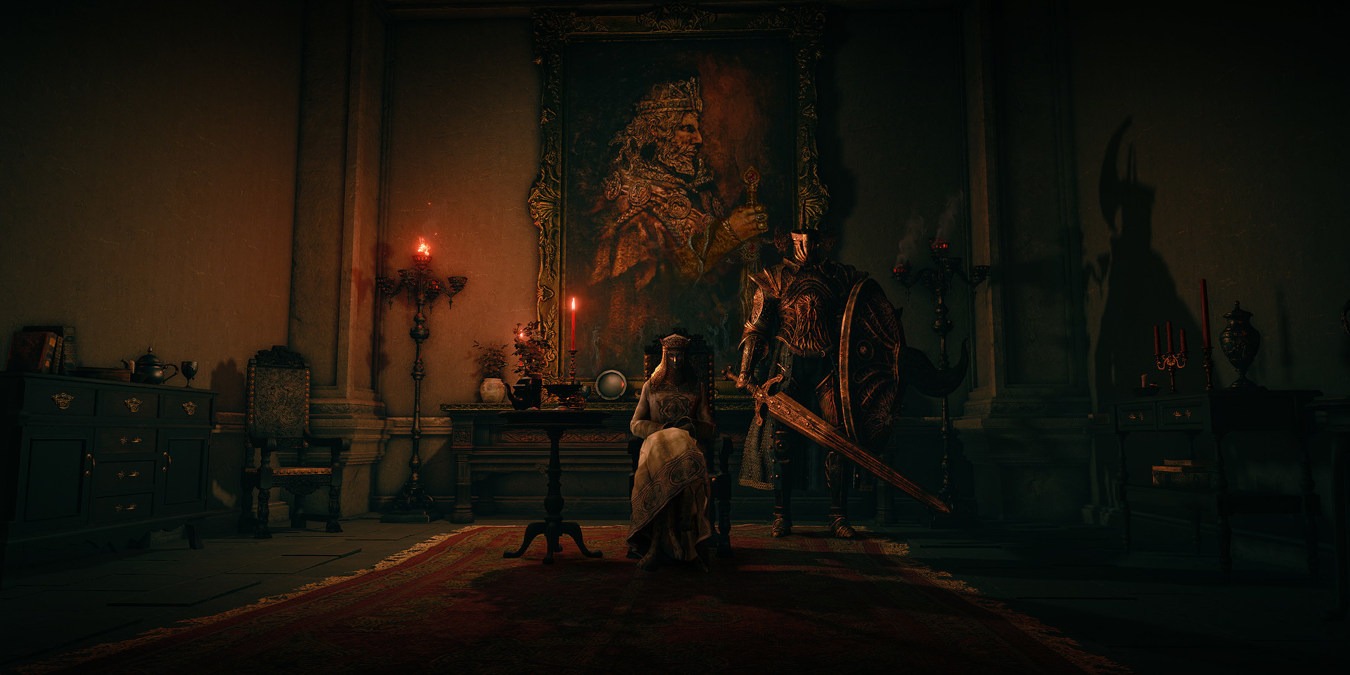
Elden Ring rapidly became a fan favorite thanks to its exceptionally built world, fresh content promised in the future, and a host of locations to explore and pillage while fending off fell beasts in the interim. Taking full advantage of this fabulous world means learning the moves, like how to parry Elden Ring style.
To new Elden Ring players, a parry may seem like a near-impossible technique that allows Tarnished to murder everything around them effortlessly. Despite that reputation, a parry in Elden Ring is more accessible than you think. With the right tools and a little practice, you, too, will become an untouchable parry machine.
To help you on your journey, here’s an in-depth guide to help you learn what a parry is, how to use it, and what items will bring your parry game to another level.
Want to know the best items in Elden Ring? Take a look at our list of the best consumable items to help you in your journey.
What is a Parry?
At its most basic, a parry in Elden Ring is an Ash of War skill that lets you deflect attacks and leaves your opponents vulnerable if successfully timed. The good news is, if you miss your parry, you will still block some of the damage you would have taken.
Keep in mind, that not all attacks are parriable. A general rule of thumb is that airborne attacks, magical attacks, grabs, whips, flails, and attacks from massive enemies like trolls are not normally parriable.
Hand Parry vs Weapon Parry
Like its predecessor, Dark Souls 3, Elden Ring has two ways to parry. One is the weapon parry. This is what happens when the parriable part of an enemy’s attack makes contact with your parry. In effect, this allows you to parry attacks from a longer distance and to parry attacks from behind you.
You’ll use this parry the most in PvP since both characters usually attack each other from their weapon’s maximum range. As a result, don’t be afraid to try and parry an invader’s long-reaching attacks.
The second way to parry is known as a hand parry, which happens when part of your opponent’s body (usually the hand) comes into contact with your parry. Unlike weapon parries, this parry will only work if your opponent is directly in front of and close to you, so position yourself accordingly. Personally, I’ve found this parry to be easier to time against non-player enemies and much harder to time against invaders with fast weapons.
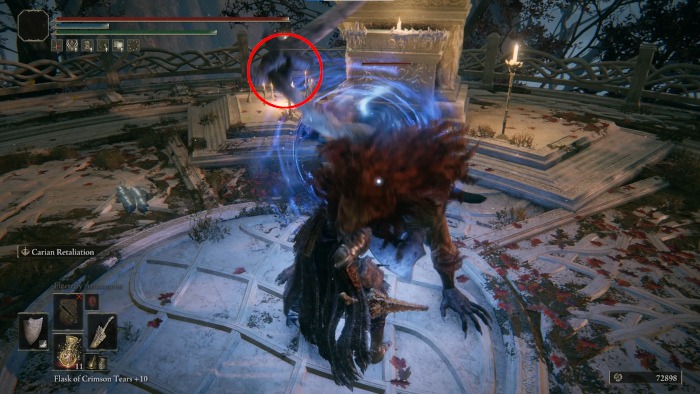
An important piece of advice to parry better is to “watch the hand; don’t watch the weapon,” and hand parries are partially the reason why. It’s a useful rule to start your parry when the opponent’s hand starts accelerating toward you. This ensures that you will parry their hand on time since weapons will usually stay in place for a moment before moving extremely fast (making them harder to time right). In comparison, hands tend to move slowly and then gradually speed up during the actual attack, making them easier to react to.
Different Equipment, Different Parries
Besides the two types of parries, different weapons also have different parries. These parries generally conform to four archetypes. Here’s what they are:
- Medium Shield parries have the slowest and least forgiving parries. Most weapons that are given the Parry skill will have a similar profile to Medium Shields. The trade-off is that Medium Shields block more damage than their smaller, more parry-friendly cousins.
- Small Shield parries have a larger window to parry an attack with. This will come at the cost of a weaker block than Medium Shields.
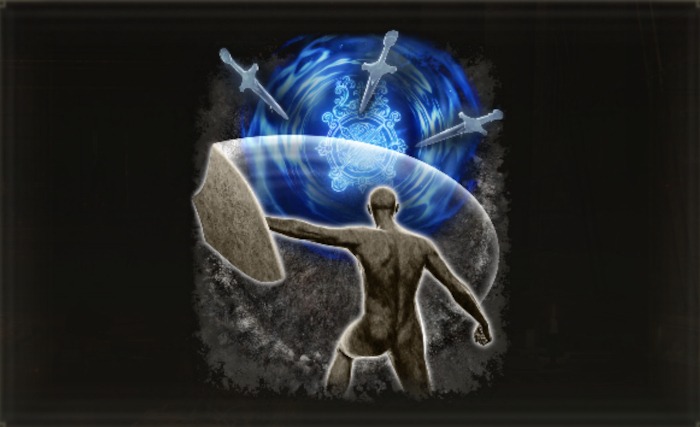
- Magical Parries usually require FP and have different effects depending on your use. Golden parry will parry attacks from a longer range, Thops’ Barrier and Carian Retaliation parries magic, and Storm Wall deflects projectiles.
- Buckler Parry is a special parry skill that is only found on the Buckler Shield. It’s just as fast as the magical parries, and doesn’t require FP, but in exchange, it’s a little slower on recovery than the magical parries.
Numbers for Nerds!
If you wanted to dive into the exact numbers, a user on the Elden Ring PvP Discord named Kaj#4218 gathered parry and dodge frame data from the game’s files and another user, Praseetha#6969, put that data onto a useful spreadsheet which can be found here.
For those that aren’t familiar with how to read frame data, startup is how long it takes before your parry activates. Parry frames are the exact time you are able to parry an attack (so the points where you want the enemy to hit you). Recovery is the time after your parry but before you can do another action.
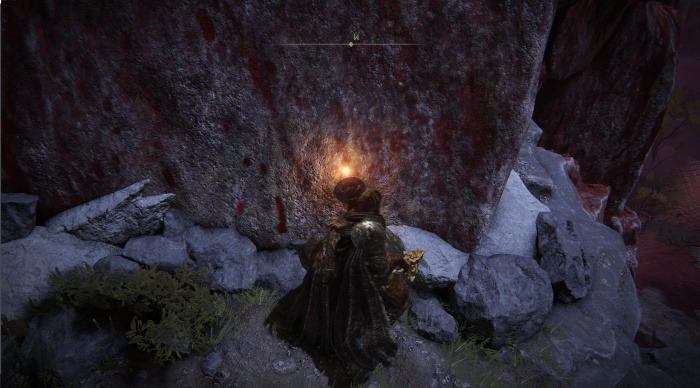
If you want an in-game visualization of this data, then head over to the nearest wall and parry. You’ll notice that there are sparks or dust clouds forming where your shield contacts the wall. Those sparks indicate the exact times where you will parry an attack. This is also a great way to see what ’10 parry frames’ looks like.
Be aware that this isn’t an exact method and is mostly a useful visualization. Using this technique to count frames may lead to some inconsistent data.
What do the numbers mean?!
The biggest takeaway is that Golden Parry and Carian Retaliation are the best parries in Elden Ring. These parries come out fast, have a large parry window, and a short recovery. This means these two magical parries are very forgiving to parry with and will let you act sooner than the other parries.
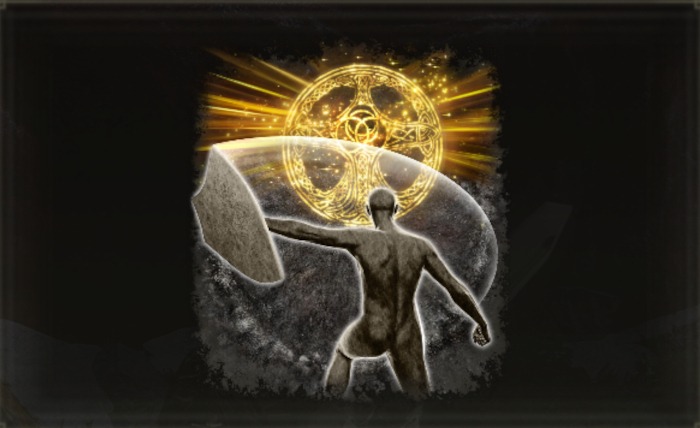
Another key takeaway is how much of an upgrade adding Golden Parry or Carian Retaliation is to a Medium Shield. Once added, Medium Shields gain a parry that’s 33% faster and parry window that’s three times larger. Combined with their superior block compared to Small Shields, and Medium Shields become an amazing defensive tool for any Tarnished.
If you don’t have these Ashes of War, then a Small Shield or Buckler is comparable until you find one of the magical parries. Small Shields have a slower parry but a shorter recovery time than the Buckler. Both of their parry windows are still 10 frames long, making them one of the better tools to parry with.
Golden Parry vs Carian Retaliation
While both of these parries are clearly the top of their class, Tarnished looking to up their parry game should consider which one fits their build better.
Golden Parry is the superior choice if you don’t want to risk getting close to your opponents, if you’re fighting multiple opponents, or if you’re unsure if the next attack is even parriable. This is best applied in PvP where the punishment for mistiming a parry is almost certain death so parrying from a safe distance is the best option. Since Golden Parry will consume FP with each cast, it’s recommended to use this parry with some way of recovering FP.
Alternatively, you could use the Golden Parry to manage groups of enemies. Golden Parry’s wide arc allows you to catch multiple opponents, giving you some breathing room and at least one free critical hit. Being able to use this parry from the air also allows you to outmaneuver these mobs while also parrying attacks.
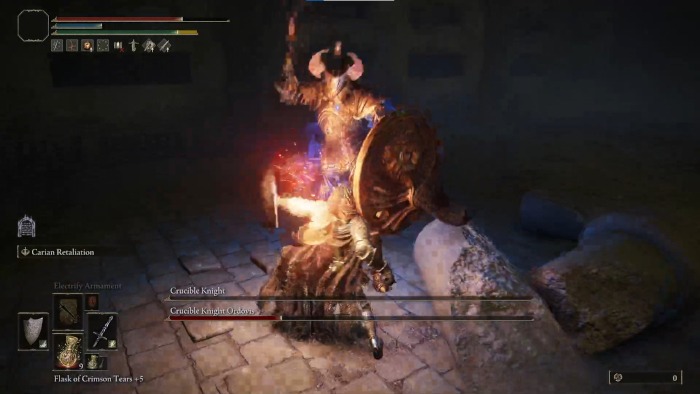
In comparison, Carian Retaliation is better against both magic users and most PvE content. The Glintswords you’ll summon deal a good chunk of damage to most enemies, and it’ll maul unaware enemy Tarnished. The best part about Carian Retaliation is how it will only consume FP if you parry magic.
This means you’ll enjoy Carian Retaliation’s fast parry speed and massive parry window for zero FP cost (unlike Golden Parry, which consumes FP with each cast). Builds that don’t have room for regenerating FP will want Carian Retaliation for these improved parry and anti-magic qualities.
Tools To Boost Your Parrying
When you’re aiming for parries, set yourself up for success with these tools. The majority of these options will help you make the most out of each successful parry you land.
Assassin’s Crimson Dagger
Location: Dropped by the Black Knife Assassin in the Deathtouched Catacomb.
- Nearest Site of Grace: Saintsbridge

This talisman turns successful parries into opportunities to heal. Each critical hit you get will heal 10% + 85 of your max HP. It’s especially good if you plan on practicing parries because mistiming parries means losing chunks of HP, which this talisman will then recover once you successfully parry.
Assassin’s Cerulean Dagger
Location: Dropped by the Black Knife Assassin in Black Knife Catacombs.
- Nearest Site of Grace: Frenzied Flame Village Outskirts
If you plan on using Golden Parry or want to incorporate parries into your magic-heavy build, then this talisman turns your successful parries into more FP. Each critical hit will now heal 15 FP. For reference, Golden Parry requires 4FP for each cast.
Miséricorde
Location: Inside of Stormveil Castle near the Grafted Scion’s room. You’ll need one Stonesword key to get this knife.
- Nearest Site of Grace: Rampart Tower
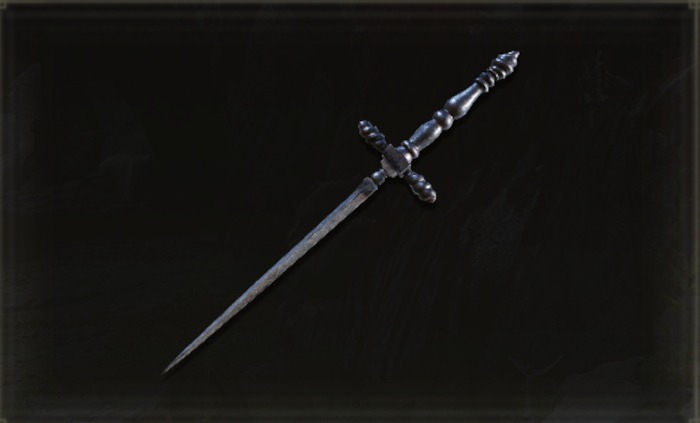
This knife has the highest critical modifier in the game, turning each parry into a devastating blow to your enemies. Knives also trigger critical hit effects like the Assassin’s Dagger talismans twice, meaning more healing and more FP refunded back to you.
Dagger Talisman
Location: On a corpse close to the Bottom of Volcano Manor. Requires two Stonesword Key to get.
- Nearest Site of Grace: Audience Pathway, or Temple of Eiglay if you haven’t fought Rykard yet.
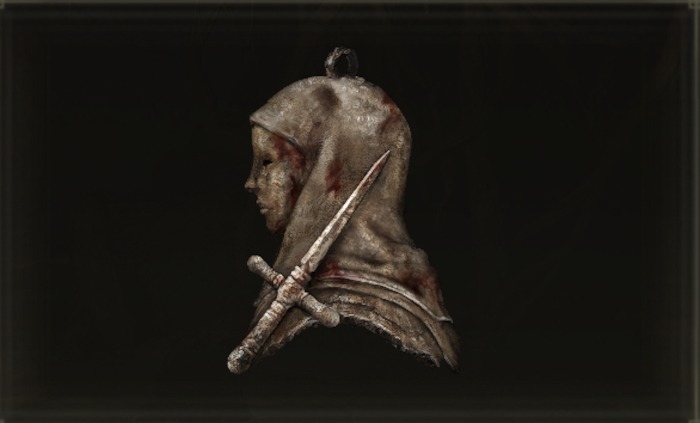
Increases critical hit damage by 17%. It’s pretty straightforward – parries now deal more damage.
Royal Knight’s Resolve
Location: Bottom floor of the Volcano Manor, below the Dagger Talisman’s location.
- Nearest Site of Grace: Audience Pathway, or Temple of Eiglay if you haven’t fought Rykard yet.
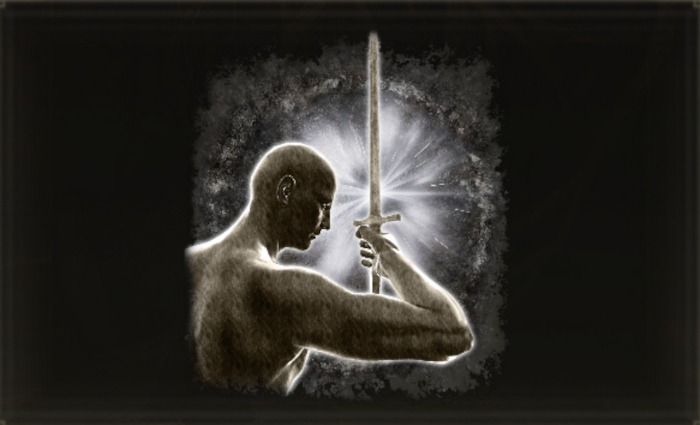
This buff lasts for 10 seconds, or when you land your next attack. Royal Knight’s Resolve buffs your damage by 80% for a single attack. Since ripostes are a single critical hit, this Ash of War is perfect for increasing your damage to crazy heights.
When you use this Ash of War will change from enemy to enemy. Some enemies will be in the ‘poise break’ animation long enough for you to cast Royal Knight’s Resolve and then immediately follow up with a critical hit. Others (like Malenia) won’t give you enough time after your parry. In those cases, you’ll want to cast it and then get a successful parry before its 10 second timer expires.
Claw Talisman
Location: Stormveil Castle, looted off a corpse on top of a building at the end of a hidden pathway.
- Nearest Site of Grace: Rampart Tower
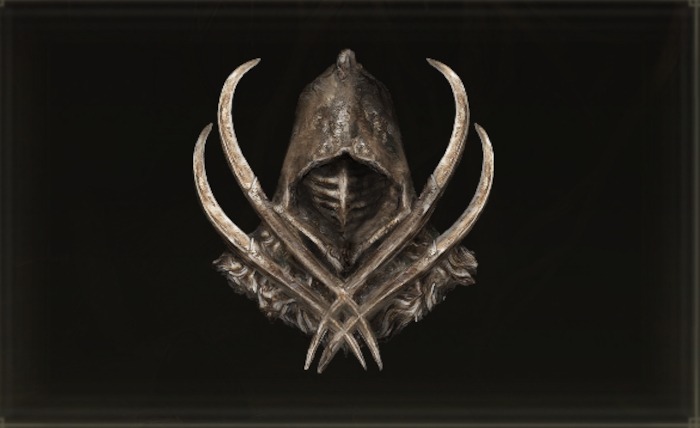
This talisman increases the damage you deal from jump attacks. It’s great against enemies you can’t critical hit like the Tree Sentinels or if you don’t plan on using critical hits for damage after your parries.
Alternative Talismans are the Winged Sword Talisman or Axe Talisman for the damage boost to repeated attacks or a single full charged attack.
The Best Shields For Parry Builds
I want to take a moment to talk about shields you should try using in parry-heavy builds. After all, not everything in this game is parriable and if you have a shield equipped you might as well use it to block unparriable attacks.
1. Brass Shield
Location: Randomly dropped by Godrick Soldiers and Raya Lucaria Soldiers (.8% chance).
- Nearest Site of Grace: Gatefront. It has at least eight soldiers to farm.
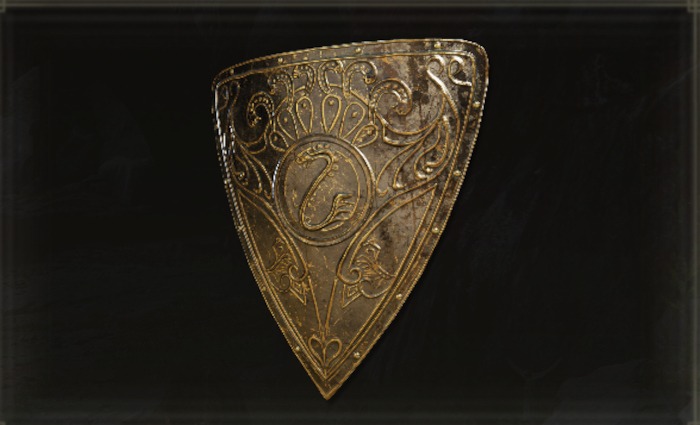
The best medium shield in the game. It’s on the heavier side at 7.0 weight, but it has 100% physical damage negation and 69% Guard Boost when fully upgraded with a Standard affinity. This makes it the perfect shield to block almost any unparriable physical attack Elden Ring can throw at you while waiting for your opponents to throw out something to parry.
On the magic side, the brass shield has middling stats against magic, fire, and holy (55, 59, and 54 respectively). While these aren’t the best stats, they’re well-balanced enough to make it an amazing shield against a majority of threats in the Lands Between and a fantastic target for Carian Retaliation or Golden Parry.
2. Carian Knight’s Shield
Location: Raya Lucaria Academy. Given to you after slaying Moongrum the Carian Knight.
- Nearest Site of Grace: Raya Lucaria Grand Library
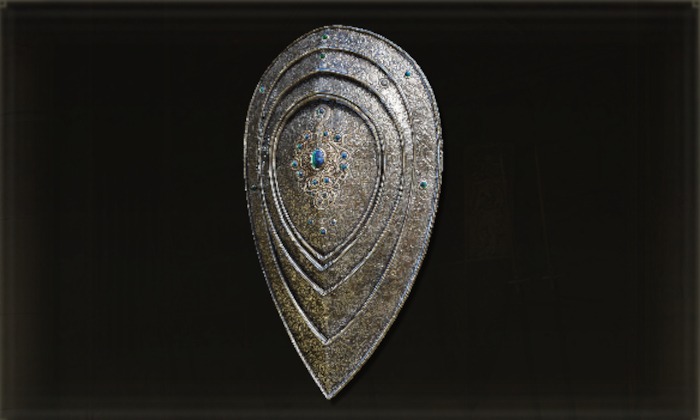
Carian Knight’s Shield has a few weaknesses to it. It doesn’t block lightning or fire very well, and its guard boost maxes out at 60% only with a Standard Affinity. This means you shouldn’t block anything for an extended period of time.
However, what makes this shield good is its ability to block magic and holy attacks extremely well. It has 71 magic negation with a Standard Affinity, which can be changed to a Magic Affinity, granting 88 magic negation at the cost of 11 guard boost.
The logic behind using this shield with your parries is that most unparriable attacks will be some form of magic attack or, towards the end of Elden Ring, a holy attack. These attacks shouldn’t hit very often, so you should have time between strikes to recover the stamina lost from this shield’s mediocre guard boost. Blocking these magical attacks will help you get close enough so you can parry your opponent’s physical attacks. Carian Retaliation also helps cover this shield’s weaknesses to lightning and fire magic.
3. Buckler
Location: Either start as the Bandit class, or purchase it from Gostoc for 1500 runes at Stormveil Castle.
- Nearest Site of Grace: Stormveil Maingate, but you’ll have to open the gate first. After slaying Godrick, he’ll be at Godrick’s Site of Grace.
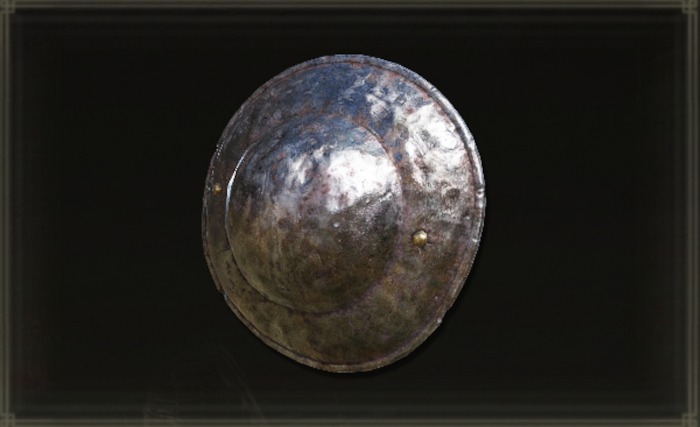
The Buckler gets a mention here because it’s the best parry shield when you don’t have access to Carian Retaliation and Golden Parry. Keep in mind, medium shields with Parry built-in have a small and slow window to parry with, making parries more difficult to perform. Small shields, in comparison, have a slightly faster but much larger parry window.
The parry window for the Buckler is even faster than the small shield’s. However, this comes at the cost of more recovery after the parry, and a weak block. For the benefit of a faster parry though, those points seem like a small price to pay until you can find Carian Retaliation at Caria Manor.
Practicing Parries
Location: Margit is near the Castleward Tunnel Site of Grace and later at the Outer Wall Battleground Site of Grace. The best Crucible knight to practice with is at the Stormhill Evergaol.
- Nearest Site of Grace: Stormhill Shack for the Stormhill Evergaol. Gatefront also offers a lot of soldier enemies to practice with.
While there are plenty of enemies to parry in Elden Ring, only a few of them are fantastic practice partners.
Margit the Fell Omen is an early and amazing way to practice parries. He has a solid mix of unparriable shenanigans and slow but obvious attacks. Each successful parry also comes with an exaggerated reaction from Margit which makes it obvious when you’ve succeeded. If you aren’t used to reacting to your opponent’s hands instead of their weapon or how to space yourself for hand parries, then Margit will beat those habits into you.
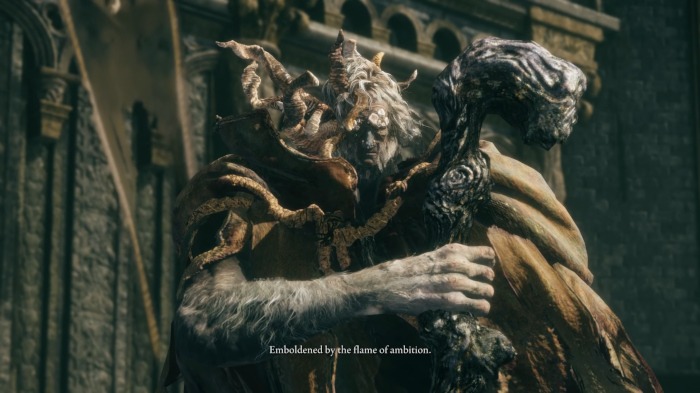
If you’ve already defeated Margit, find enemies like the early soldiers of Godrick, Crucible Knights, or anything with a massive axe. These enemies have slow and extremely telegraphed attacks, making them the perfect opponents to practice parry timings.
Crucible Knights are particularly wonderful parry practice partners as well. Similar to Margit, they have a good mix of unparriable attacks and extremely telegraphed attacks.
Need more games in your Tarnished life? Check our list of the best bosses in Elden Ring or the best sorceries in Elden Ring.












